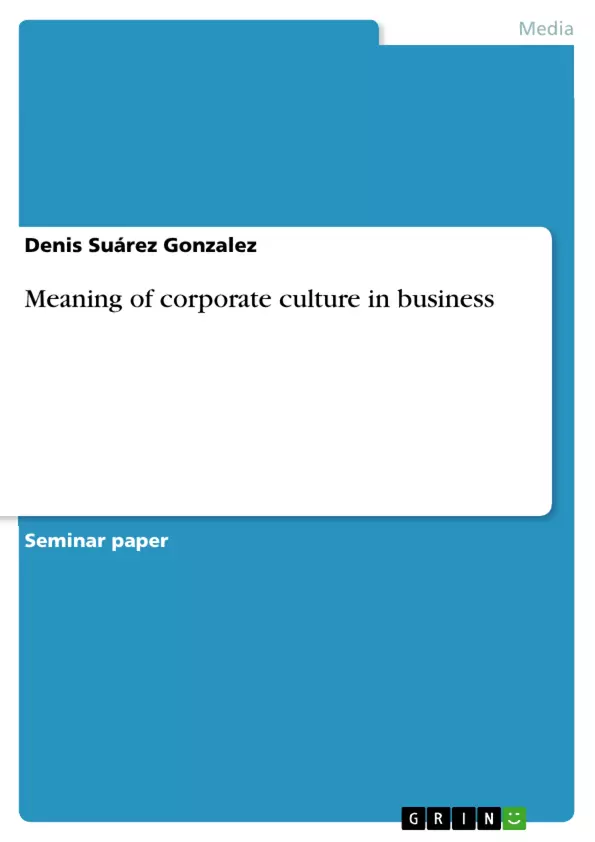This work aims to provide a first insight into the topic of corporate culture and investigate their importance to business success. After the introduction to the subject, culture in general will be defined. Then will be a move to focus on the entrepreneurial dimension to the fore. Then, a recent study by the German Federal Ministry of Labour and Social Affairs, will illustrate the meaning of corporate culture for the entrepreneurial success. This scientific study is based on a comprehensive statistical data base and can explicitly explain – along the fundamental Aspects a manager must observe – if and why corporate culture influenced the organizational success.
Lectori salutem. ;o)
Table of Contents
- Introduction
- Introduction to the subject
- Objectives and structure
- Basics and general information
- What is culture in general
- All about corporate culture
- Through corporate culture to economic success
- Influences and requirements of corporate culture
- Conclusion
Objectives and Key Themes
This work aims to explore the meaning of corporate culture in business, analyzing its role in driving economic success and its key influences and requirements.
- Definition and understanding of corporate culture
- The impact of corporate culture on company success
- Factors that influence and shape corporate culture
- Key requirements for a successful corporate culture
Chapter Summaries
The introduction provides a brief overview of the topic, outlining the objectives and structure of the work. The second chapter explores the general concept of culture, laying a foundation for understanding corporate culture. The third chapter delves into the world of corporate culture, examining its role in achieving economic success and exploring its key influences and requirements.
Keywords
This work focuses on the key concepts of corporate culture, economic success, influences, requirements, and cultural dimensions. The text also explores the relationship between corporate culture and employee engagement.
- Quote paper
- M. A. Denis Suárez Gonzalez (Author), 2012, Meaning of corporate culture in business, Munich, GRIN Verlag, https://www.grin.com/document/372133



